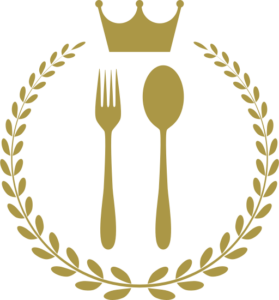Coleslaw Vs Caesar Salad: Which One Is Right For You?
When it comes to classic side dishes, coleslaw and Caesar salad stand out as two beloved options. Both refreshing and flavorful, they offer distinct taste experiences that complement a wide range of main courses. In this blog post, we’ll delve into the world of coleslaw vs Caesar salad, exploring their origins, ingredients, nutritional value, and culinary applications.
Origins and History
Coleslaw
Coleslaw, a staple of American cuisine, originated in the Netherlands in the 18th century. The Dutch word “koolsla” translates to “cabbage salad,” reflecting its primary ingredient. Cabbage was brought to the Americas by Dutch settlers and quickly became a popular salad base.
Caesar Salad
Caesar salad has a more recent history, dating back to the 1920s. It was created by Italian immigrant Caesar Cardini in Tijuana, Mexico, as a last-minute dish for a large group of hungry guests. The salad gained popularity and became a signature dish at Cardini’s restaurant.
Ingredients and Preparation
Coleslaw
Coleslaw is typically made with shredded cabbage, carrots, and onions. The dressing, which varies depending on the recipe, usually includes mayonnaise, vinegar, sugar, and spices.
Caesar Salad
Caesar salad is made with romaine lettuce, croutons, Parmesan cheese, and a classic dressing made with egg yolk, lemon juice, Dijon mustard, garlic, and olive oil.
Nutritional Value
Coleslaw
Coleslaw is a good source of fiber, vitamin C, and vitamin K. The mayonnaise-based dressing, however, can add significant calories and fat.
Caesar Salad
Caesar salad is also a good source of fiber, but it is higher in calories and fat due to the croutons and Parmesan cheese. It provides some vitamins and minerals, including vitamin A, vitamin C, and calcium.
Culinary Applications
Coleslaw
Coleslaw is a versatile side dish that can accompany a variety of main courses, including barbecue, fried chicken, and fish. It can also be served as a topping for tacos, sandwiches, and burgers.
Caesar Salad
Caesar salad is a classic choice for salads and can be served as a side dish or a main course. It pairs well with grilled chicken, steak, or shrimp.
Taste and Texture
Coleslaw
Coleslaw has a crunchy texture and a tangy, slightly sweet flavor. The mayonnaise-based dressing adds richness and creaminess.
Caesar Salad
Caesar salad has a creamy, flavorful dressing that coats the romaine lettuce. The croutons add a crispy texture, while the Parmesan cheese provides a salty, umami flavor.
Which One to Choose?
The choice between coleslaw and Caesar salad ultimately depends on personal preference and the occasion.
When to Choose Coleslaw
- When you want a crunchy, tangy side dish
- When you’re looking for a low-calorie option
- When you want a topping for sandwiches or tacos
When to Choose Caesar Salad
- When you crave a creamy, flavorful salad
- When you want a more substantial side dish
- When you’re looking for a salad that pairs well with grilled meats
Key Points: A Culinary Symbiosis
Coleslaw and Caesar salad, while distinct in their flavors and textures, both hold a special place in the culinary landscape. They offer a refreshing and flavorful complement to a wide range of main courses, catering to diverse tastes and preferences. Whether you prefer the crunch of coleslaw or the creamy indulgence of Caesar salad, these classic sides will continue to delight and satisfy for years to come.
Answers to Your Most Common Questions
Q: Which salad has more calories?
A: Caesar salad is higher in calories than coleslaw due to the croutons and Parmesan cheese.
Q: Is coleslaw a good source of vitamin C?
A: Yes, coleslaw is a good source of vitamin C, which is important for immune function and skin health.
Q: Can I make Caesar salad dressing without raw eggs?
A: Yes, you can make Caesar salad dressing without raw eggs by using a pasteurized egg yolk or a commercial egg substitute.
